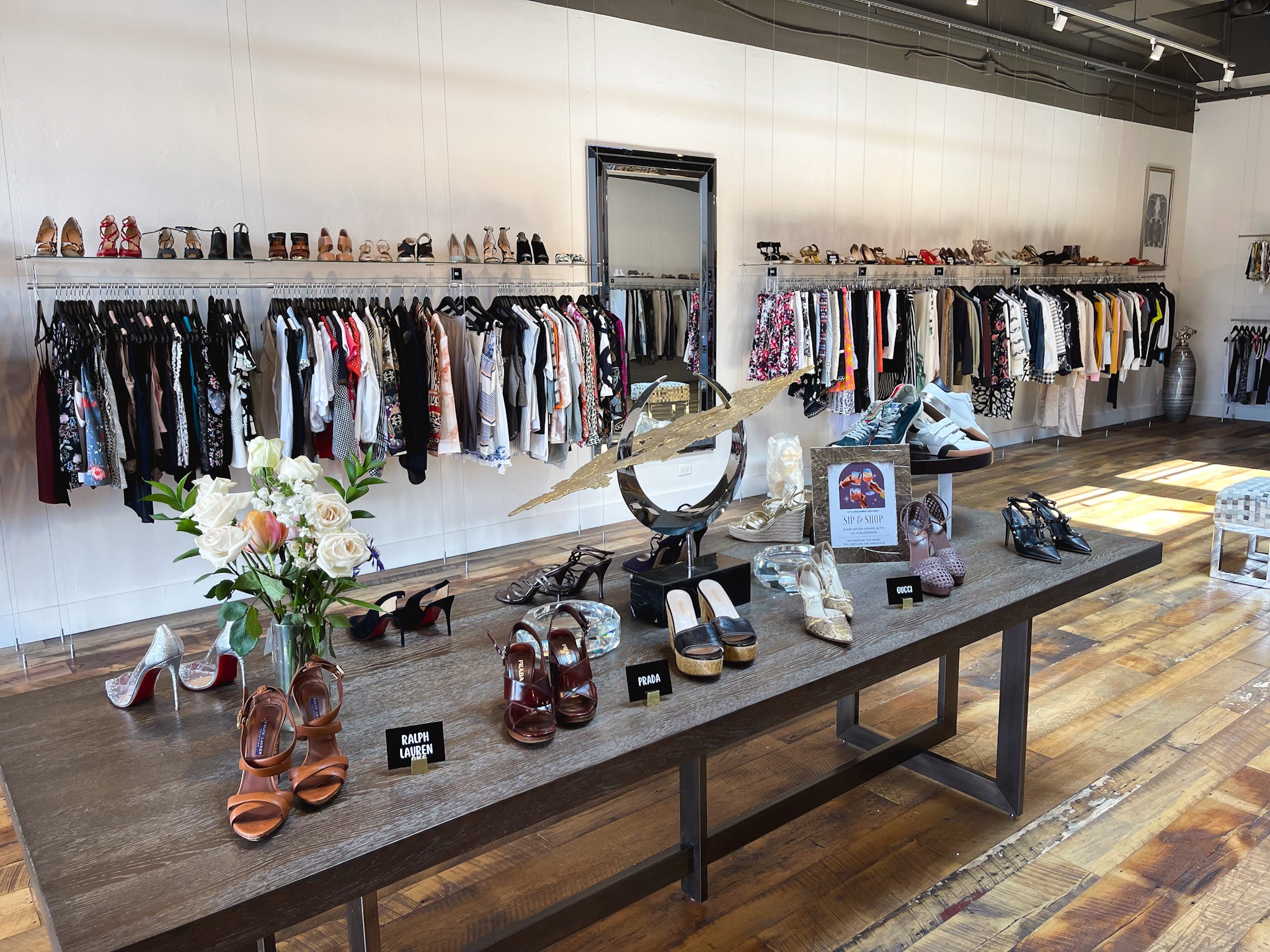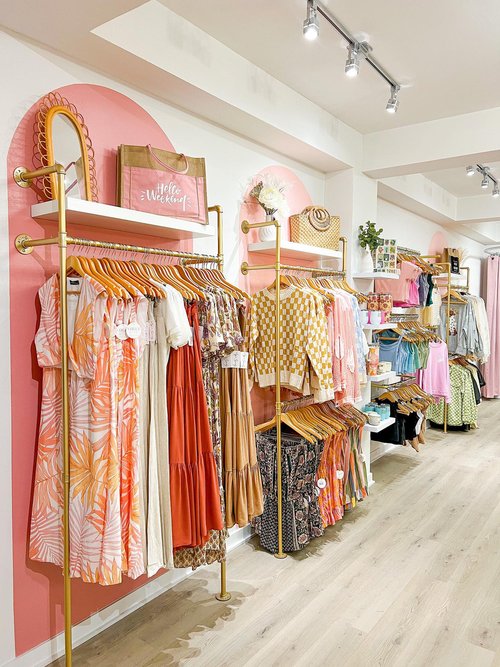The Impact of Social Media on Today's Boutique Fashion Trends
The Impact of Social Media on Today's Boutique Fashion Trends
Blog Article
A Deep Study the Globe of High-Fashion Runways: Comprehending Clothing as Art
Designers, much like masterful musicians, weave elaborate stories via color, kind, and material, testing conventional norms and redefining appeal standards. As we discover these sartorial spectacles, we must contemplate: what duty does fashion play in shaping social worths, and how does it show the ever-changing tapestry of human feeling and identity?
The Evolution of Runway Shows
The trajectory of path shows has actually transformed substantially over the decades, developing from special sector events to exciting eyeglasses that mix style with art. Traditionally, path shows were intimate affairs, kept in ateliers or small venues, largely participated in by buyers and sector insiders. These early presentations concentrated on the garments' workmanship and commercial feasibility, providing a straight and practical display of seasonal collections.
As the style sector increased, the nature of path shows began to change. The 1970s and 1980s marked a turning factor, with developers looking for to differentiate themselves via more theatrical discussions.
In recent years, technology and social networks have better changed path shows, making them obtainable to a global audience. Livestreaming and electronic systems have actually democratized fashion, permitting lovers worldwide to witness these occasions in real-time (boutique fashion). This advancement reflects a wider social shift, where high-fashion runways work as a dynamic intersection of technology, design, and performance
Designers as Visionary Artists
Designers in the high-fashion sector have actually obscured the lines in between practical garment creation and the theoretical realm of art. By embracing imaginative techniques such as sculpture, painting, and progressive installments, designers craft garments that challenge standard style norms and raise them to art kinds.
Visionary developers attract inspiration from a myriad of sources, including abstract art, historical recommendations, and individual narratives. They have an one-of-a-kind capability to envision and emerge concepts that press the boundaries of standard fashion, often redefining visual standards while doing so. This innovative ingenuity is showcased via significant shapes, ingenious products, and intricate workmanship, which invite customers to experience style as even more than simply wearable items.
Moreover, the runway functions as a canvas for these musicians, where lights, music, and set style coalesce to create immersive experiences. These presentations are not merely screens of apparel but are orchestrated efficiencies that evoke feeling and prompt idea, affirming the designer's role as a real artist in the contemporary social landscape.
Cultural Impacts in vogue
Cultural tapestry weaves its intricate patterns right into the fabric of fashion, influencing designers internationally. The vibrant interchange of cultural stories, customs, and symbols educates and inspires collections that grace high-fashion paths. Developers diligently attract from their heritage or involve with cultures distinct from their very own, crafting garments that work as visual stories. This social discussion not only improves the aesthetic variety yet likewise promotes a deeper understanding and recognition of international identifications.
The influence of society on fashion is commonly seen in the reinterpretation of typical garments and patterns. The use of Japanese robes, Indian saris, or African prints in modern fashion shows a mix of cultural authenticity and modern visual appeals. Designers such as Valentino's Pierpaolo Piccioli and Alexander McQueen's Sarah Burton have actually been known to incorporate abundant cultural themes into their couture collections, converting history into wearable art.

Innovation in Material and Layout
Innovation in material and design consistently reshapes the landscape of high-fashion, pushing limits and redefining possibilities. In recent times, technological innovations have substantially added to this development, introducing products that challenge typical assumptions. Textiles ingrained with smart fibers, with the ability of transforming shade or controling temperature level, are no more constrained to the world of sci-fi. Developers are significantly discovering the assimilation of technology, such as 3D printing, which enables the development of intricate frameworks that were formerly unimaginable.
The style market is seeing a rise in the usage of environmentally friendly products, acquired from recycled plastics, natural fibers, and even eco-friendly components. Designers are embracing these products to craft garments that are both aesthetically striking and conscious of their eco-friendly footprint.
In regards to design, speculative forms and progressive shapes are continuously transforming the path. By incorporating unusual products and cutting-edge methods, designers cultivate garments that blur the line in between fashion and art, setting new criteria for creative thinking and expression in the high-fashion ball.
Influence of Fashion on Culture
Style wields a profound influence on culture, working as both a representation of social official source identity and a driver for social modification. With its advancement, style has mirrored social shifts, enveloping the zeitgeist of various ages. For example, the flapper dresses of the 1920s personified a newly found sense of ladies's liberation, while the vibrant prints of the her explanation 1960s echoed the cutting edge spirit of the time. High-fashion runways, in specific, serve as platforms for tough norms and redefining charm standards. Developers utilize these locations to address pushing social problems, from sustainability to diversity, therefore forming public discussion.
Additionally, style has the power to bridge social spaces, cultivating understanding and gratitude among varied groups. As globalisation increases, the cross-cultural exchange of style concepts comes to be significantly substantial, promoting inclusivity and variety. The increase of streetwear, originating from city subcultures, illustrates how fashion can transcend socio-economic borders, approving people a way of self-expression and empowerment.
In essence, style is not merely about aesthetics; it is a dynamic pressure that affects worths, mindsets, and social progress (boutique fashion). By continually connecting with social and cultural currents, style stays an integral component of the collective human experience

Verdict
High-fashion paths function as vibrant arenas where garments goes beyond performance to come to be a meaningful art type. Designers, similar to visionary artists, manage collections that show identity, feeling, and cultural stories, challenging conventional visual appeals. The fusion of innovative material and layout, coupled with intricate set layouts, lighting, and music, produces immersive experiences that celebrate cultural diversity. This intersection of style and creativity not just astounds target markets worldwide yet also influences social perceptions and advertises a much deeper appreciation for multiculturalism.

Social tapestry weaves its detailed patterns right into the fabric of fashion, affecting designers internationally.Style possesses an extensive impact on society, serving as both a representation of cultural identification and a stimulant for social modification.
Report this page